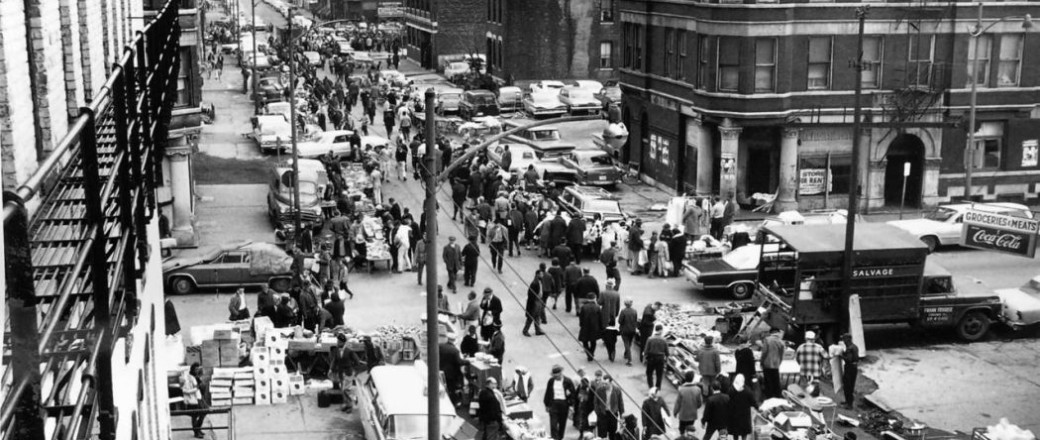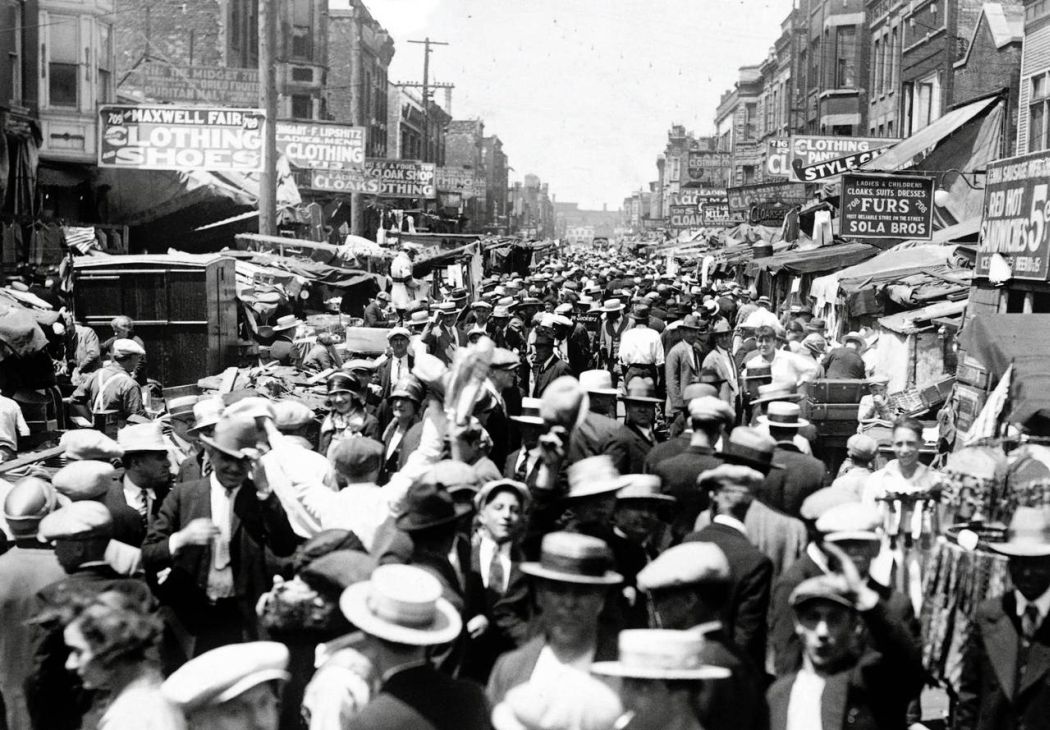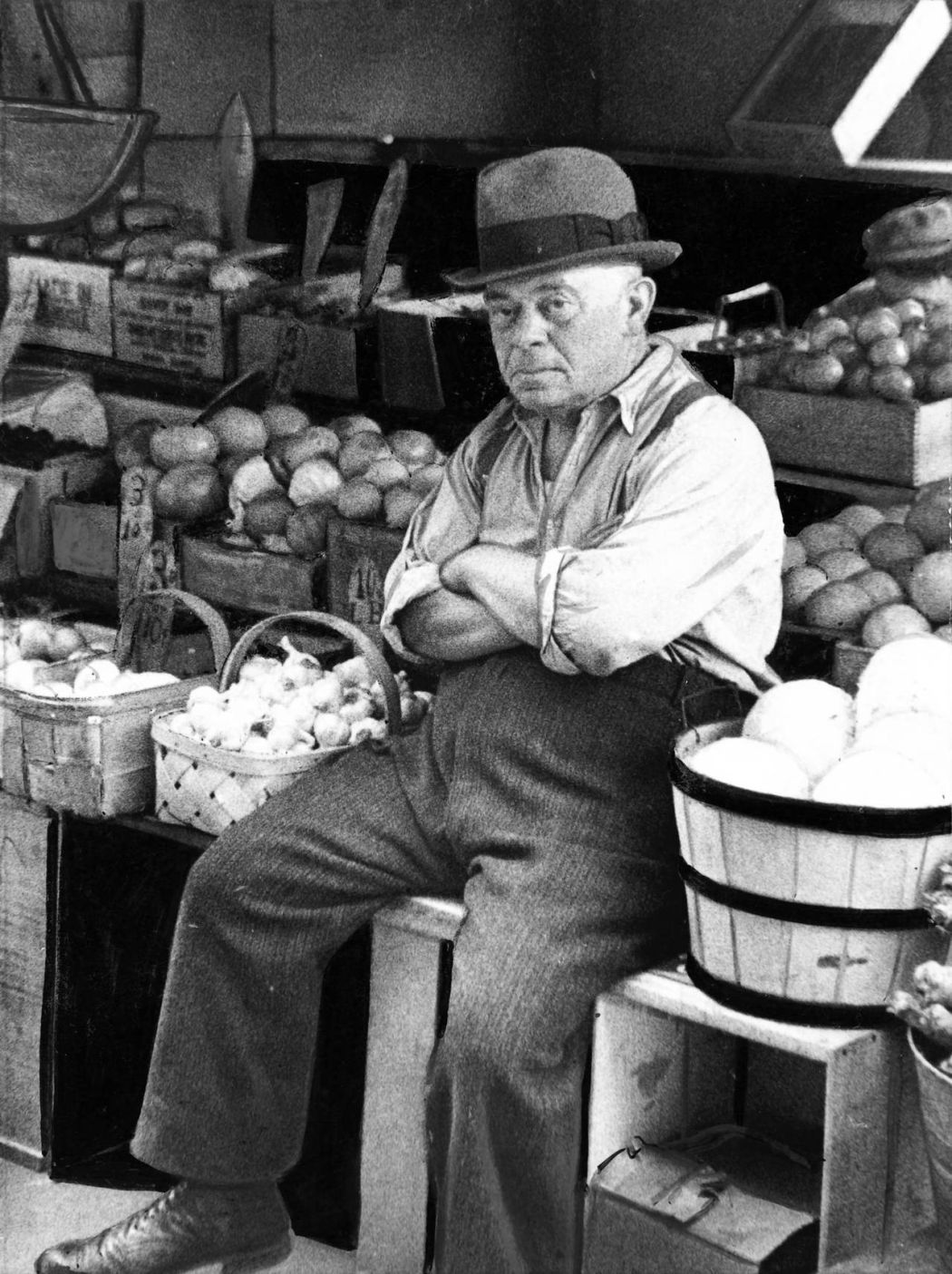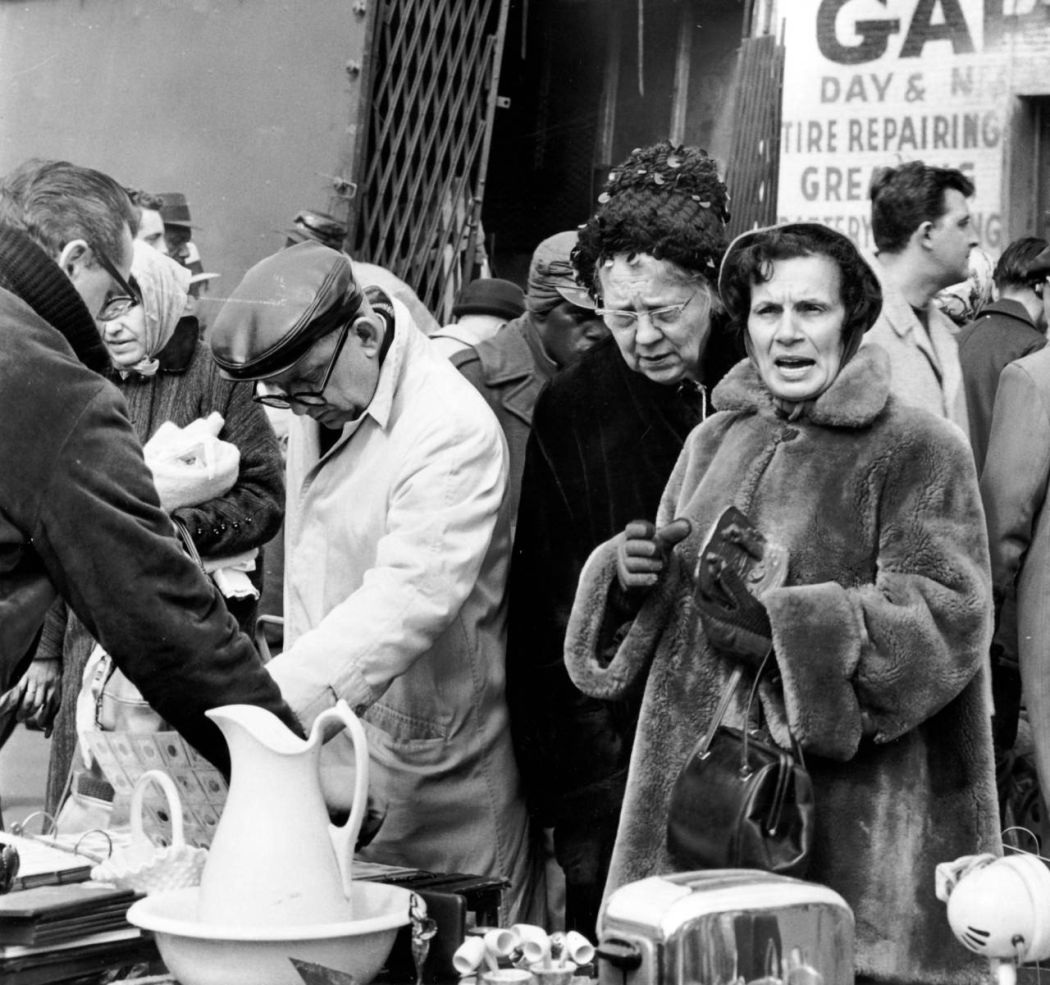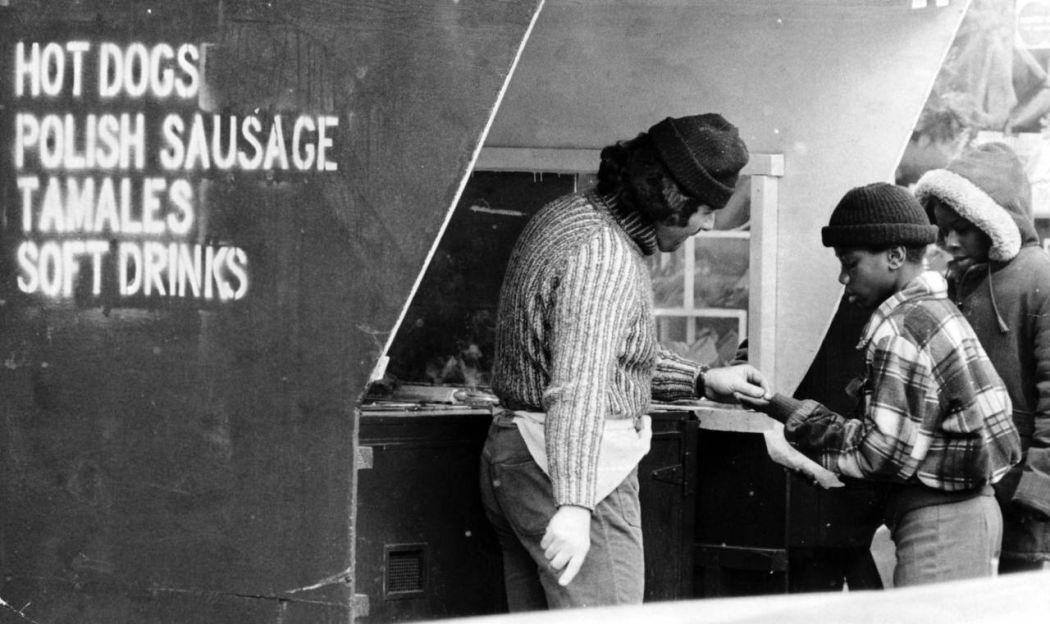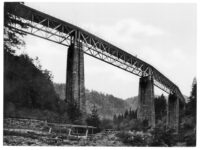Maxwell Street first appears on a Chicago map in 1847. It was named for Dr. Philip Maxwell. It was originally a wooden plank road that ran from the south branch of the Chicago River west to Blue Island Avenue. The earliest housing was built by and for Irish immigrants who were brought to Chicago to construct the first railroads. It continued to be a “gateway” neighborhood for immigrants, including Greeks, Bohemians, Russians, Germans, Italians, African Americans and Mexicans.
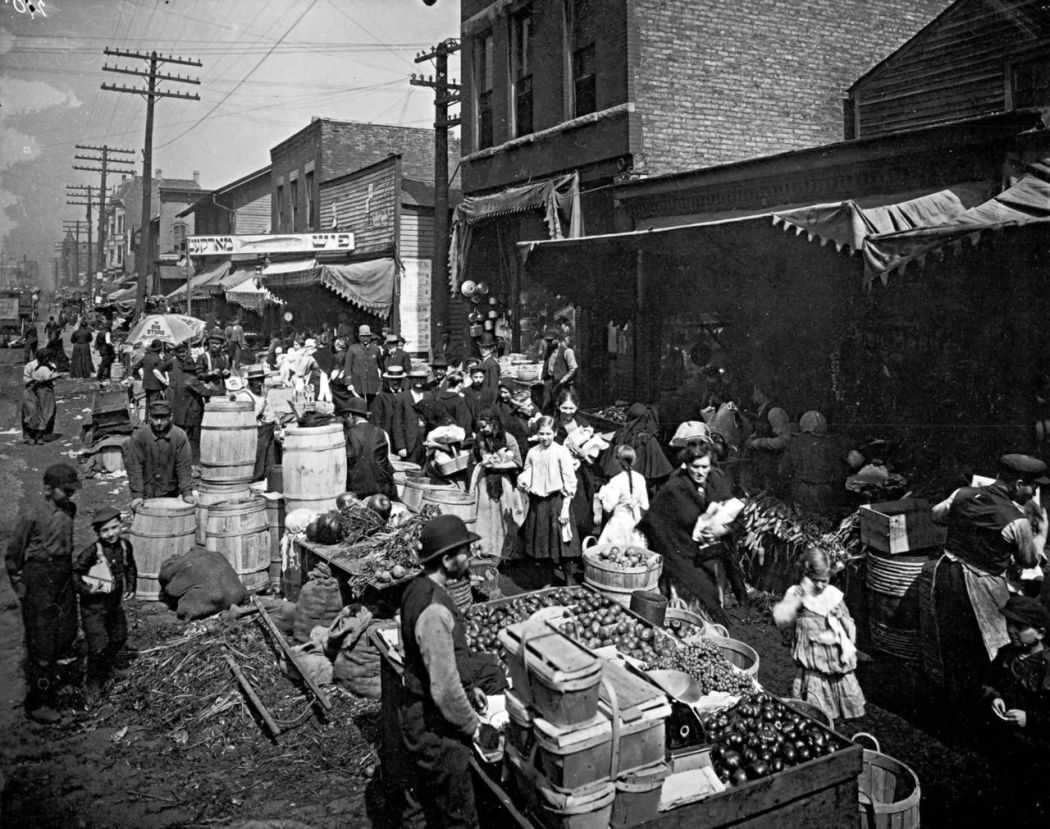
In the late nineteenth century, Jewish immigrants started a produce market on Maxwell Street where it crosses Halsted Street. Over the years, Maxwell Street, shown here in about 1905, grew into a vast Sunday-morning flea market. The market moved east to Canal Street in 1994, when the Maxwell Street area was bought by the University of Illinois at Chicago. — Barnes-Crosby, Chicago History Museum
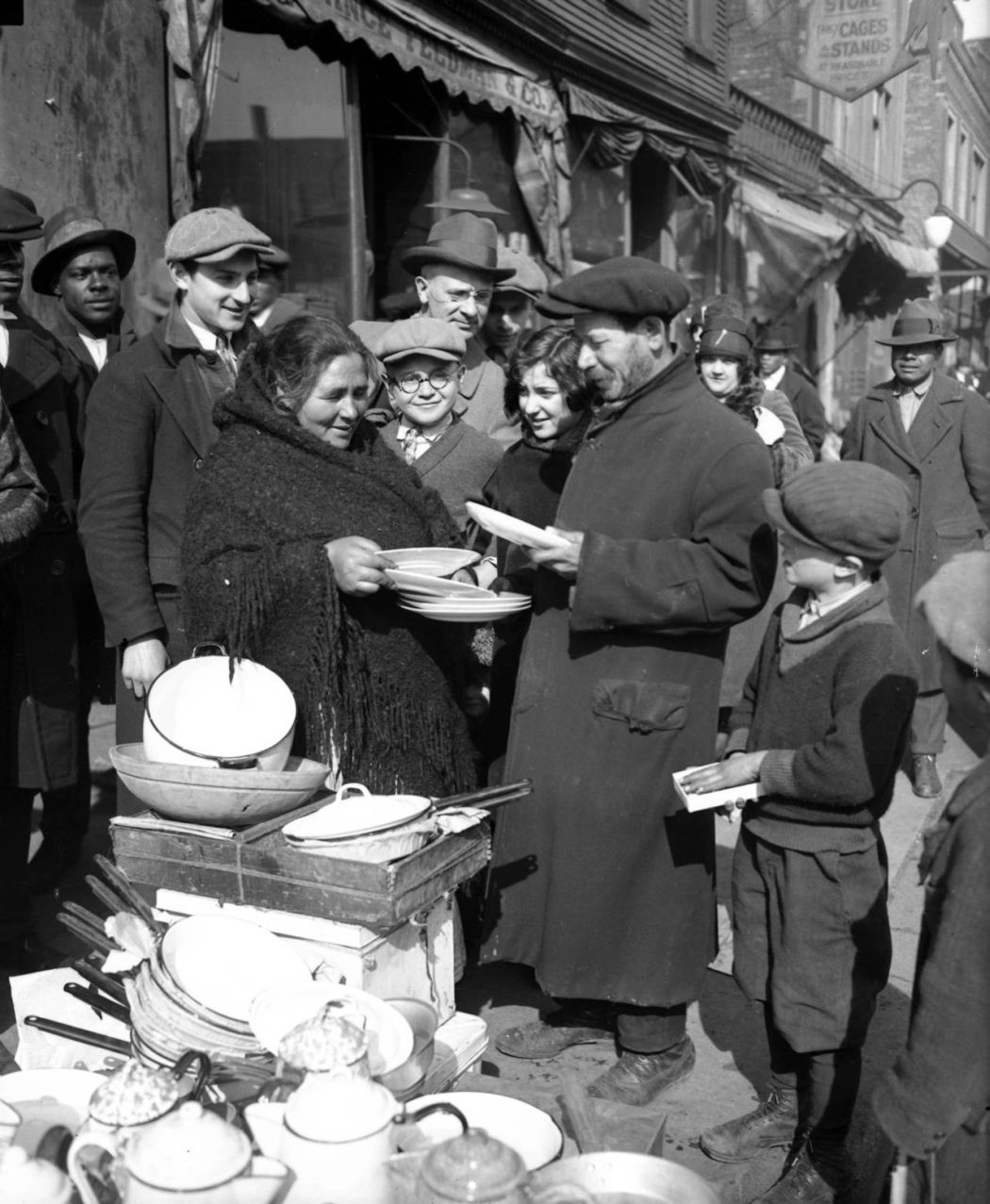
Joe Kaplan sells dishes to Mrs. Freida Sawyer at Maxwell and Peoria Streets, circa April 1927. — Chicago Tribune historical photo
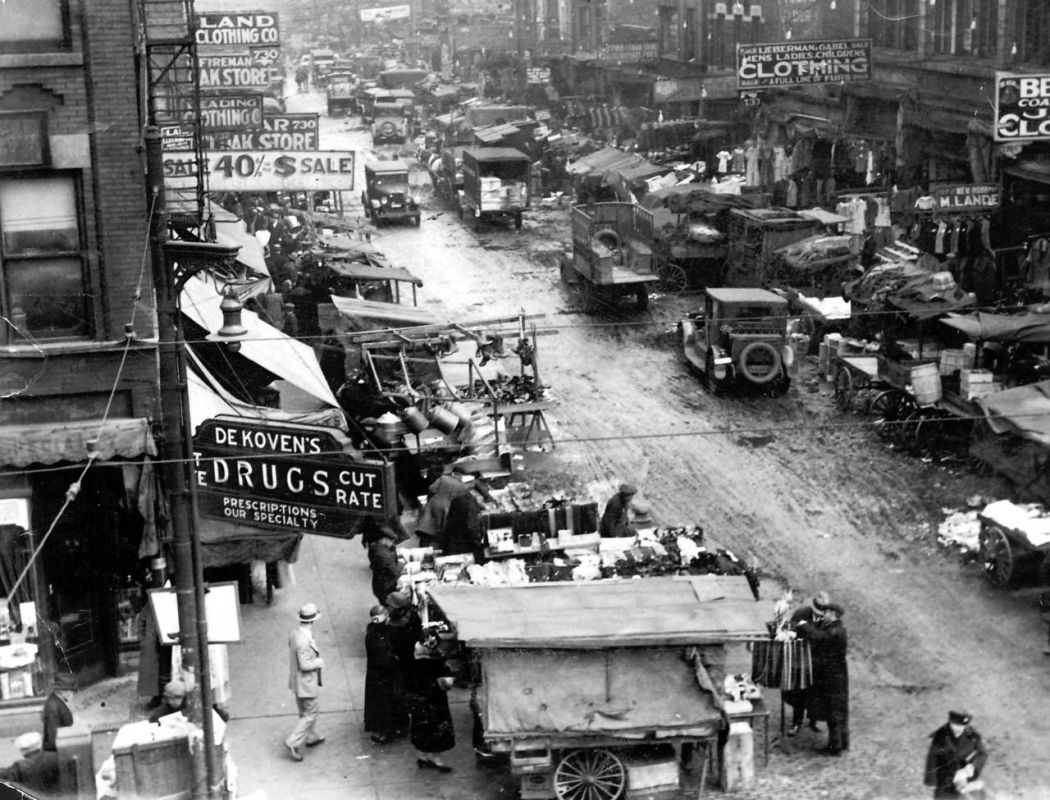
The business carts and stalls were ready for a brisk day of business during the springtime on Maxwell Street on March 19, 1926. — Chicago Tribune historical photo
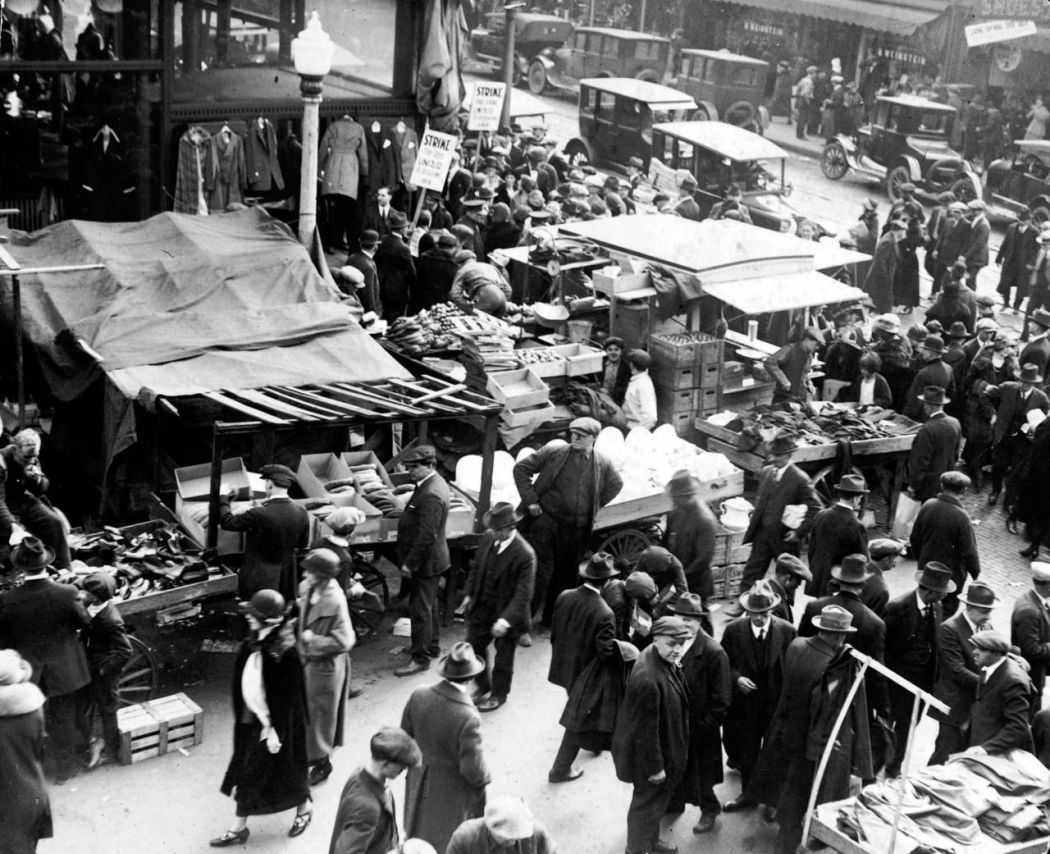
A springtime crowd shops at Maxwell and Halsted Streets at the market in the early 1920s. Note the striking garment workers picketing in the background. — Chicago Tribune historical photo
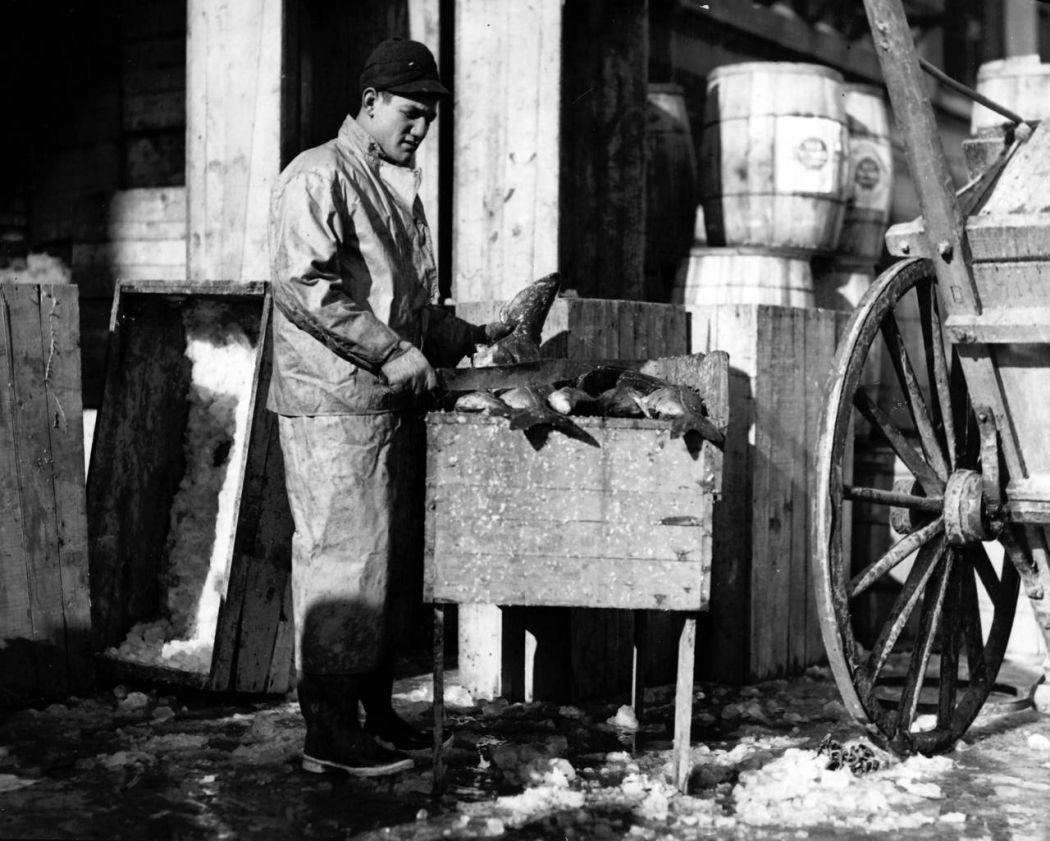
King Levinsky, seen here in 1931, worked in his family’s fish market on Maxwell Street in 1931 even as he was achieving fame as a professional heavyweight boxer. — Chicago Tribune historical photo
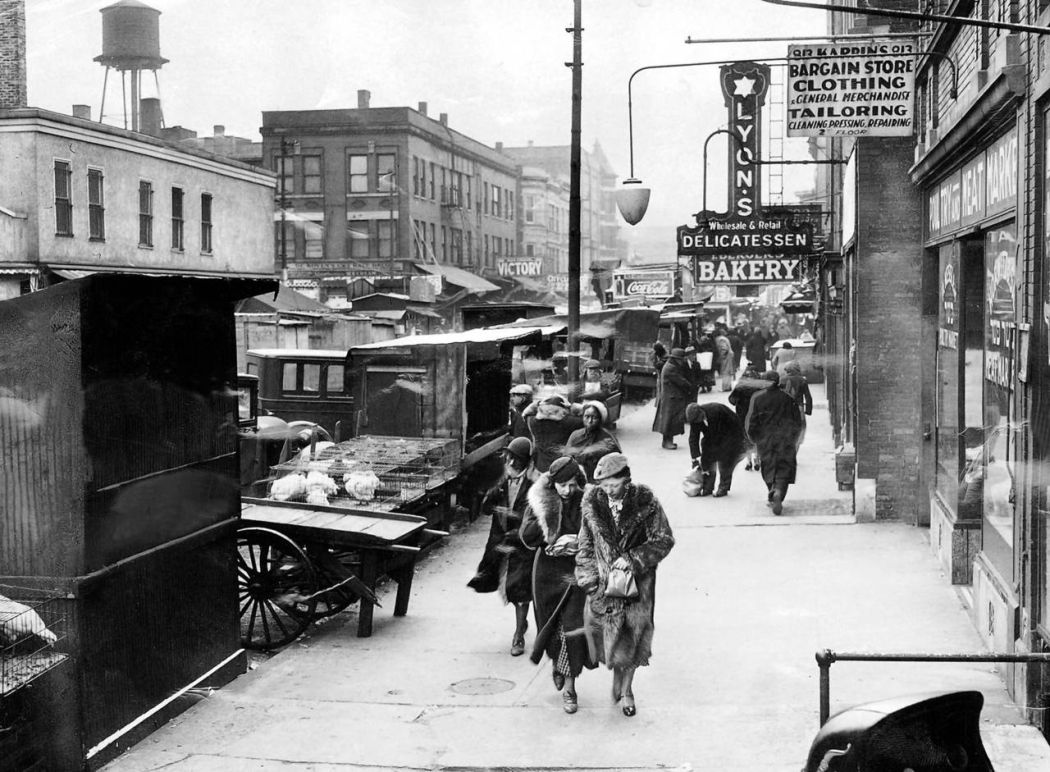
The Maxwell Street market, looking toward Halsted Street, on Nov. 21, 1935, after city officials forced merchants to clear the sidewalks of their wares. They were still allowed to use the street. — Chicago Tribune historical photo
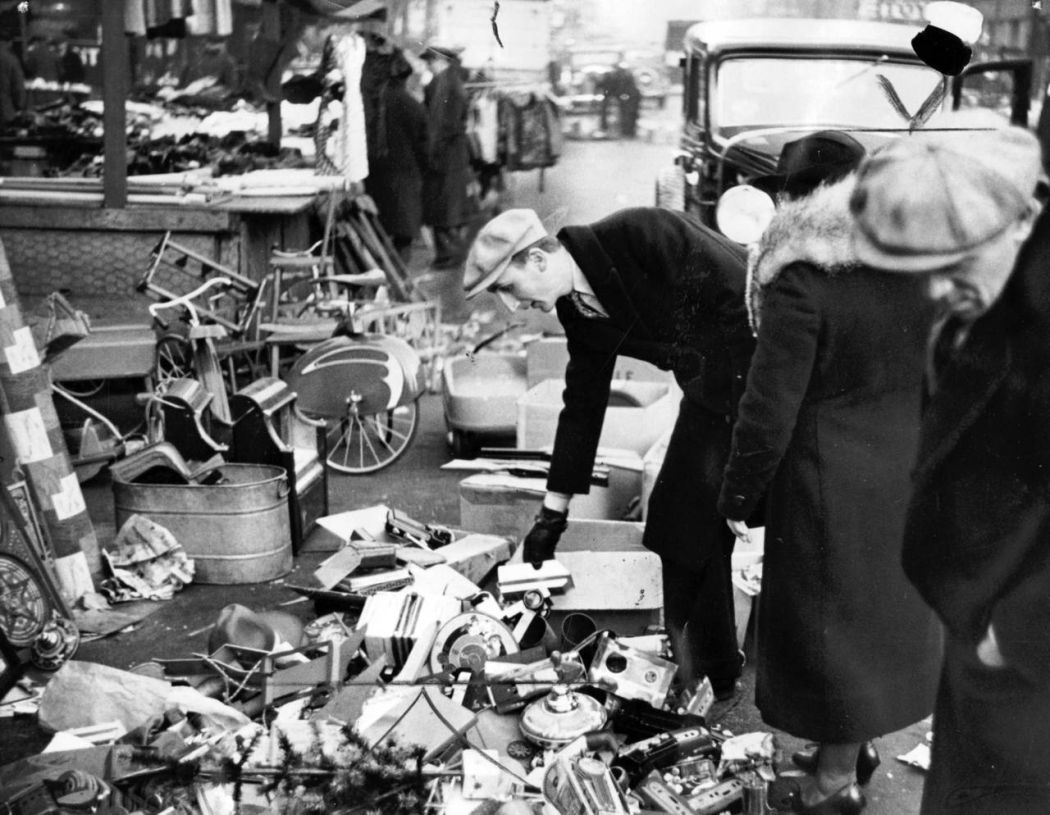
While record breaking throngs were buying luxury gifts in Loop stores in Dec. 1936, Maxwell Street merchants applied their usual tactics to shoppers in their district. Many placed their merchandise on stands, but some heaped their toys on the sidewalk to lure purchasers. — Chicago Tribune historical photo

Sarah Neiman, from left, and George Cohen weigh fish and chat with customers Bertha Bluestein, Sophie Paletz and Olive Greenburg at Maxwell Street Market, circa May 18, 1934 — Chicago Tribune historical photo

Soroka Rayfield, 70, grinds horseradish at Maxwell Street Market in 1938. Rayfield had made a living on Maxwell Street for 20 years grinding and selling horseradish. According to the original caption, Rayfield is not worried “about the suggestion that the Maxwell St. market be wiped out. This is his only livelihood and he may be seen any Thursday at the Ghetto market.” — Chicago Tribune historical photo
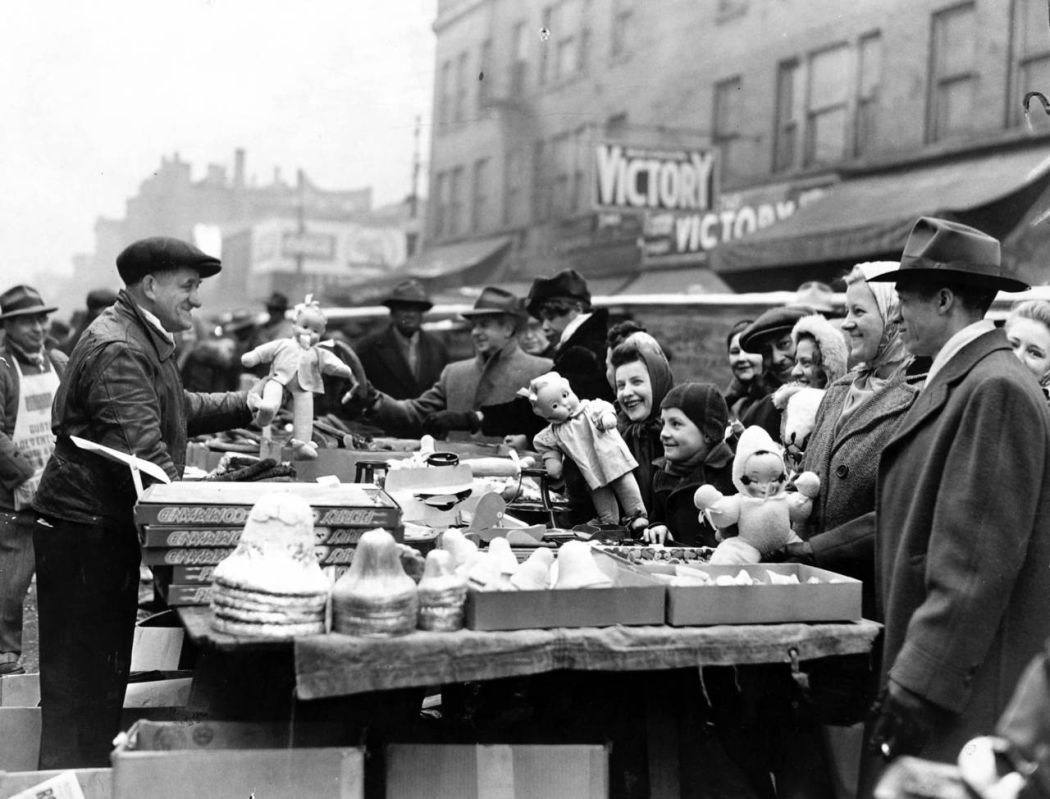
A Maxwell Street vendor tries to entice late Christmas shoppers with ornaments and dolls on Dec. 24, 1944. — Swain Scalf, Chicago Tribune
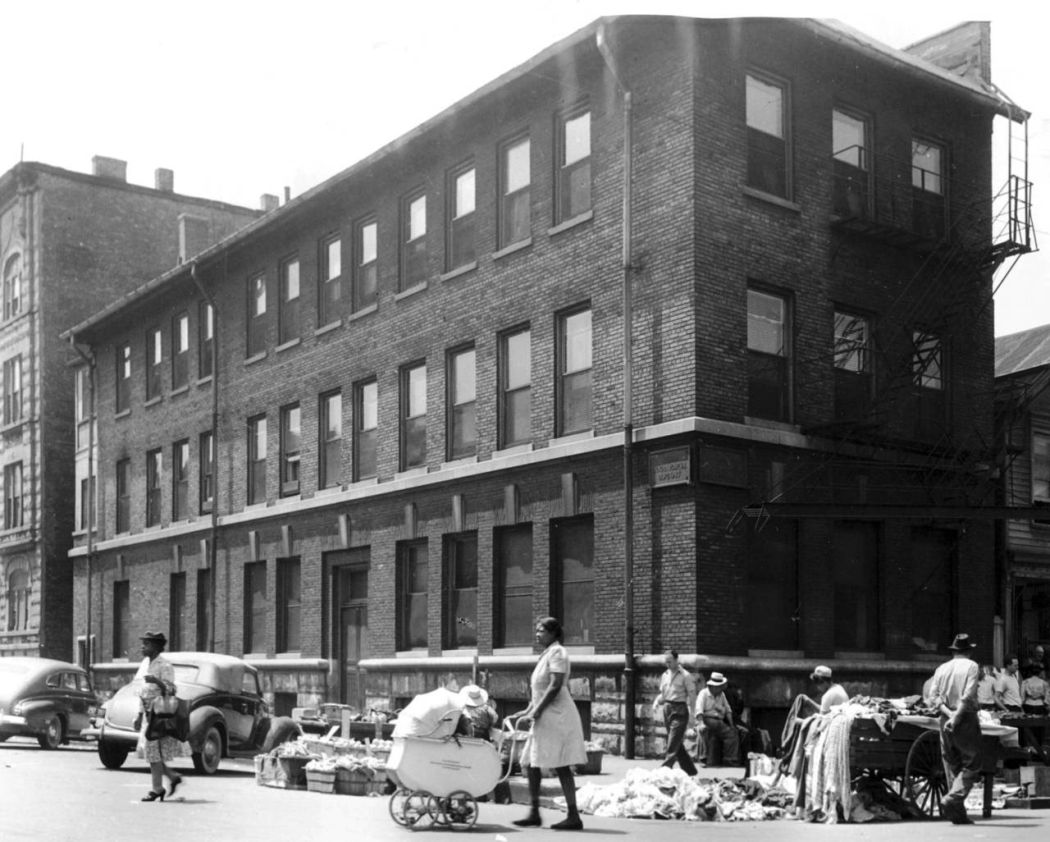
In June 1944, the Chicago Maternity Center on the corner of Maxwell Street and Newberry Avenue was surrounded by the open-air market. — Josepf Szalay, Chicago Tribune historical photo
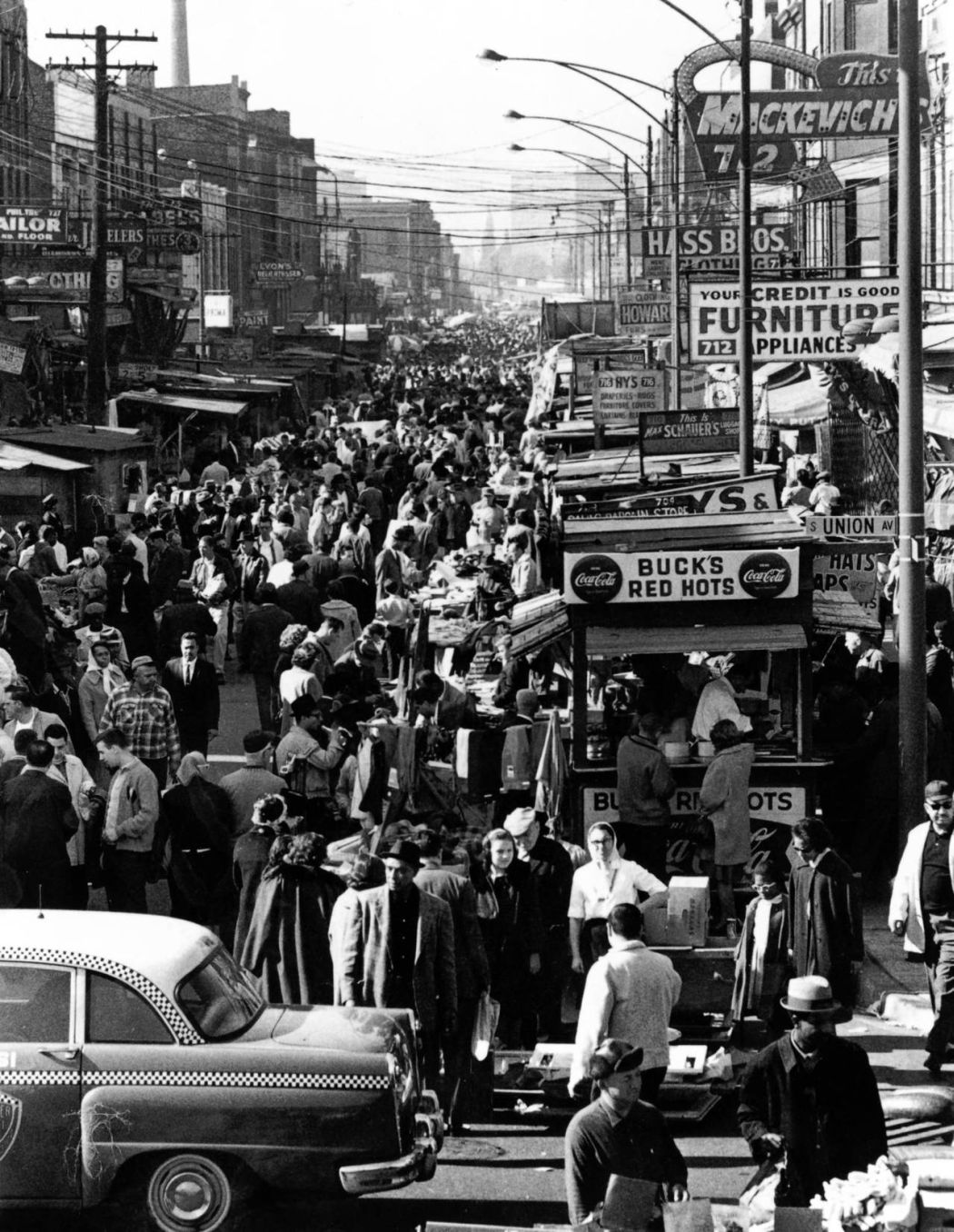
An undated photo of the Maxwell Street Market at the height of its popularity. — Chicago Tribune historical photo
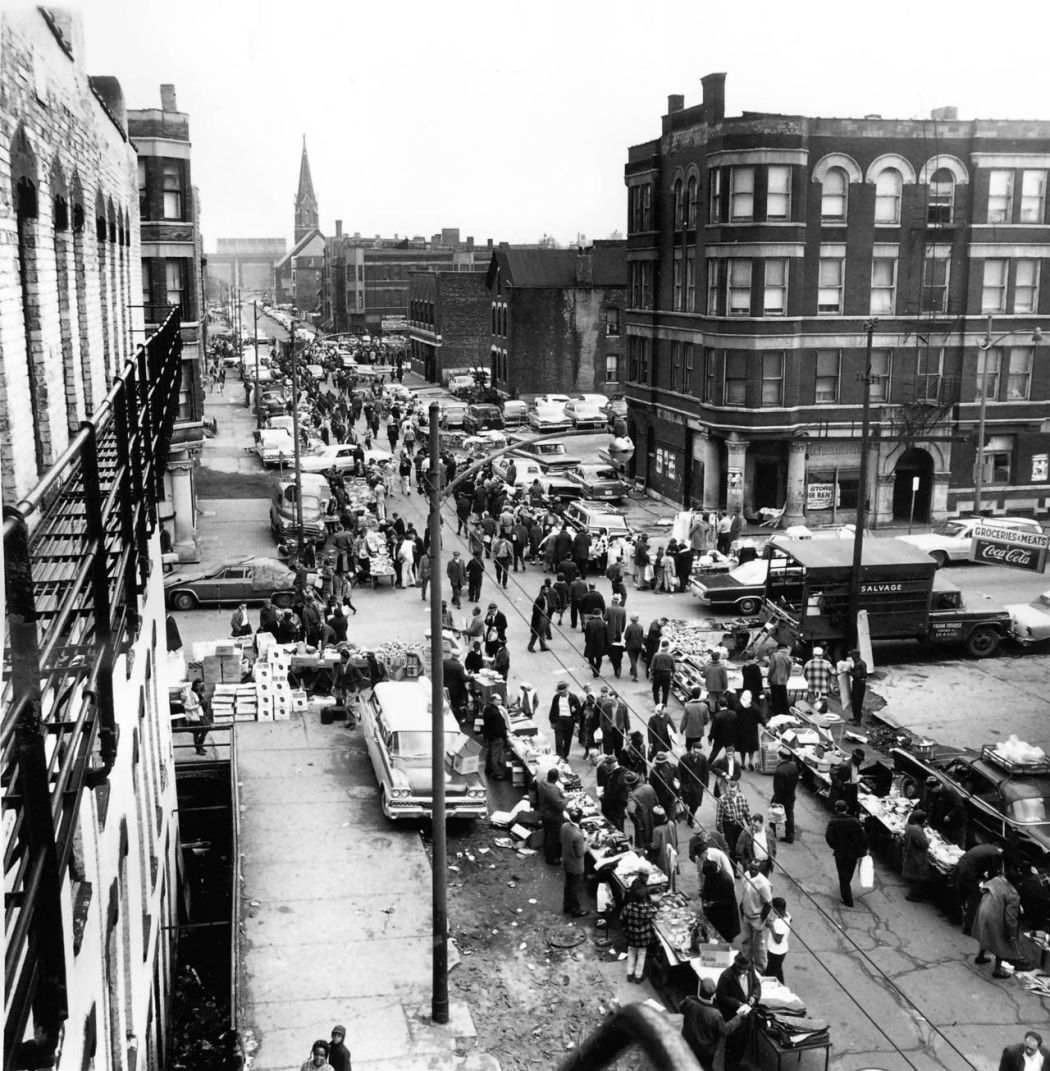
Not too long ago the four-block Maxwell Street, shown here in April 1965, attracted up to 10,000 customers on a Sunday afternoon and was described by a writer as being as “dazzling as a merry-go-round.” When this photo was published in 1965, the open-air market’s future was in doubt. — Robert MacKay, Chicago Tribune

Maxwell Street had its share of characters, including Margo, who sold pinwheels at the corner of Maxwell and Halsted Streets in August 1963. The original caption said this: “This is our world, old but good. We won’t be wanted when the new University of Illinois is built,” said Margo. About six blocks of the market was eliminated because of expressway construction. — Ed Wagner Sr., Chicago Tribune
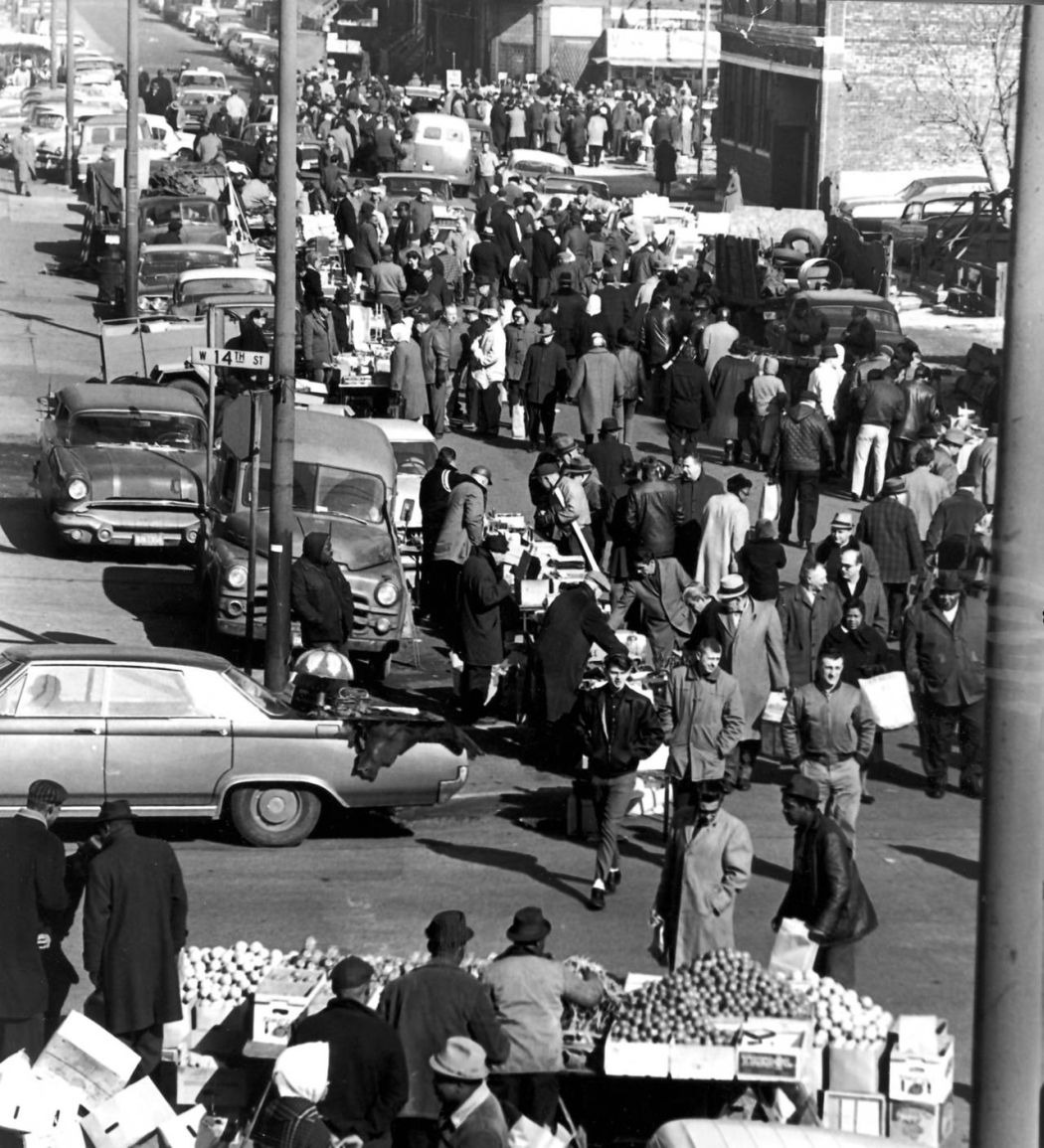
The scene at 14th Street shows the size of a Sunday crowd at Maxwell Street Market in Feb. 1965. — Chicago Tribune historical photo
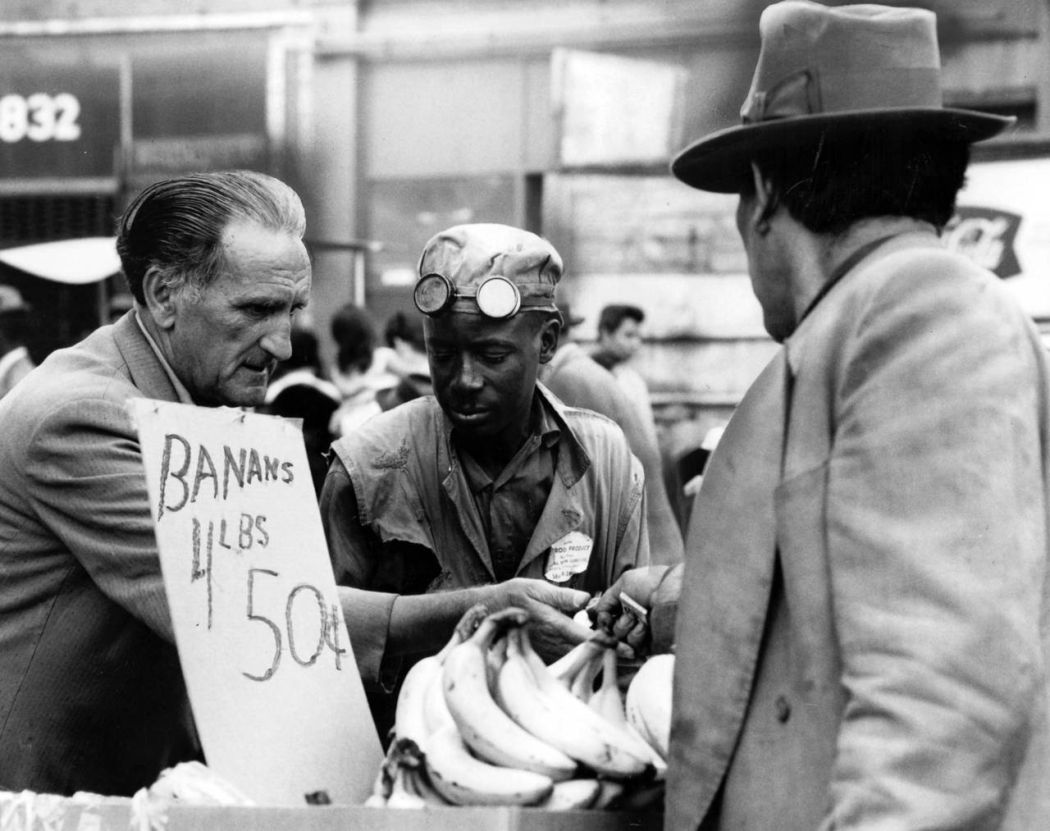
Just because the sign says bananas are 50 cents for 4 pounds doesn’t mean a purchase on the Maxwell Street open market will be without its bargaining on Sept. 20, 1966. Editors note: The sign in this print has been partially hand painted. — Chicago Tribune historical photo
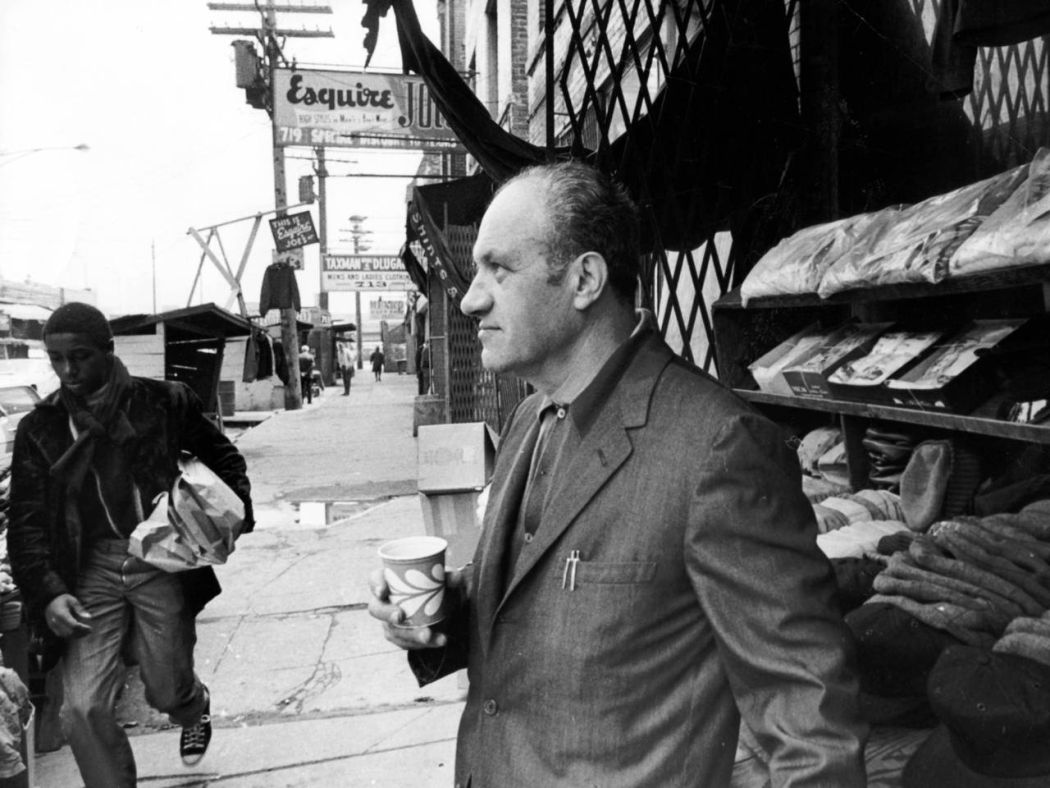
Bernard Pinsker stands outside his shop on Maxwell Street, east of Halsted Street, on April 17, 1970. — Jack Mulcahy, Chicago Tribune
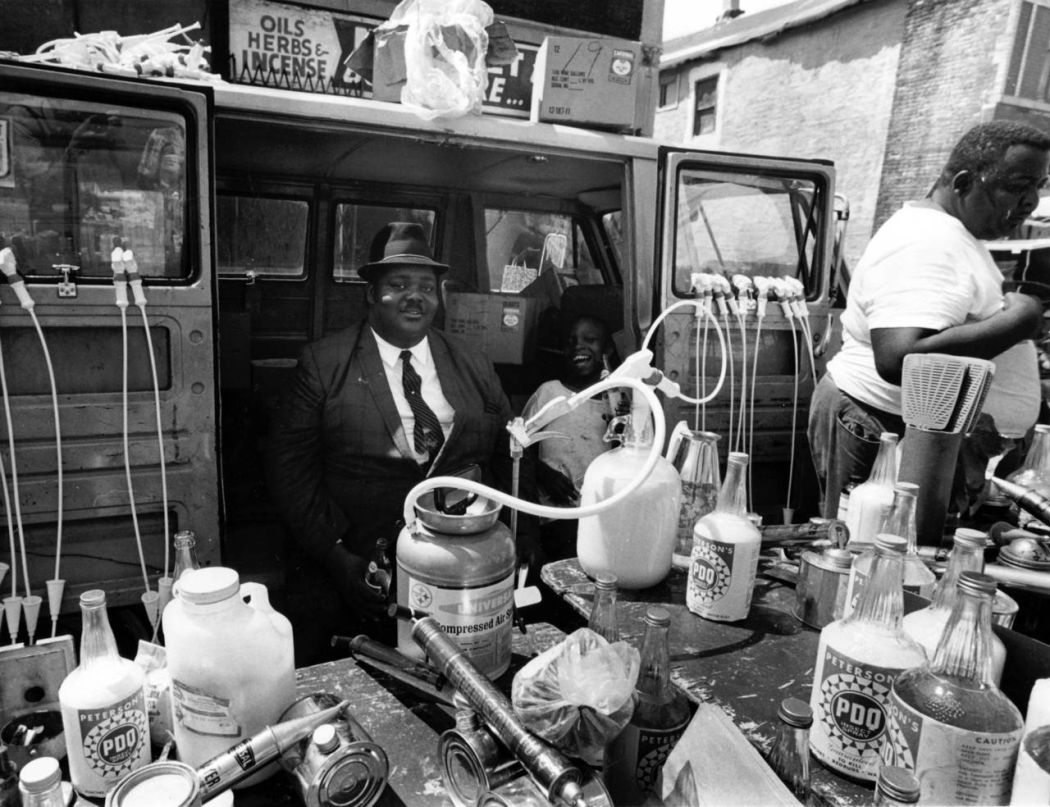
A merchant sells insect spray at Maxwell Street market on Aug. 3, 1969. — James Mayo, Chicago Tribune
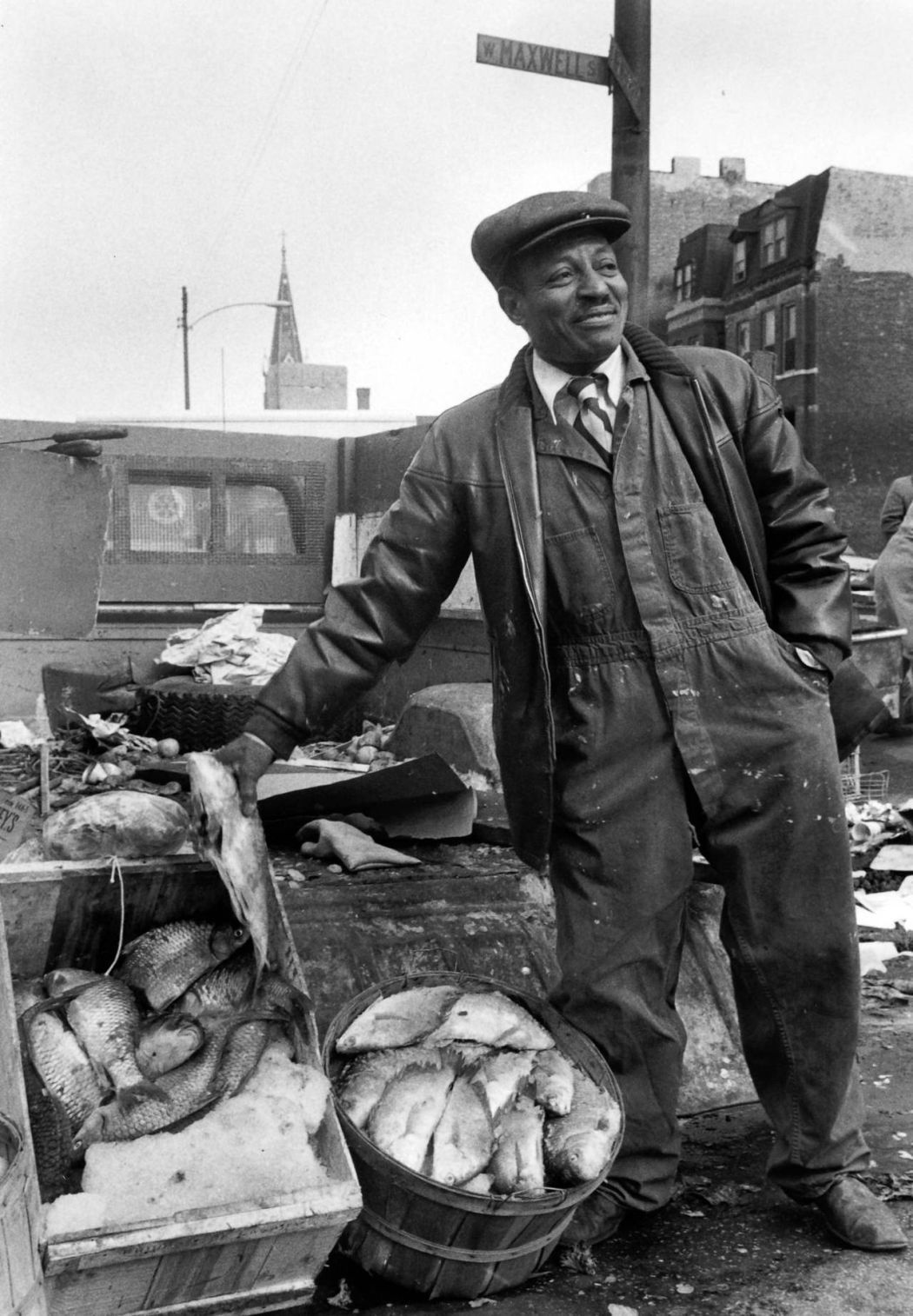
A fishmonger tries to catch the attention of shoppers on a cold Sunday at Maxwell Street Market on Feb. 3, 1974. — James Mayo, Chicago Tribune
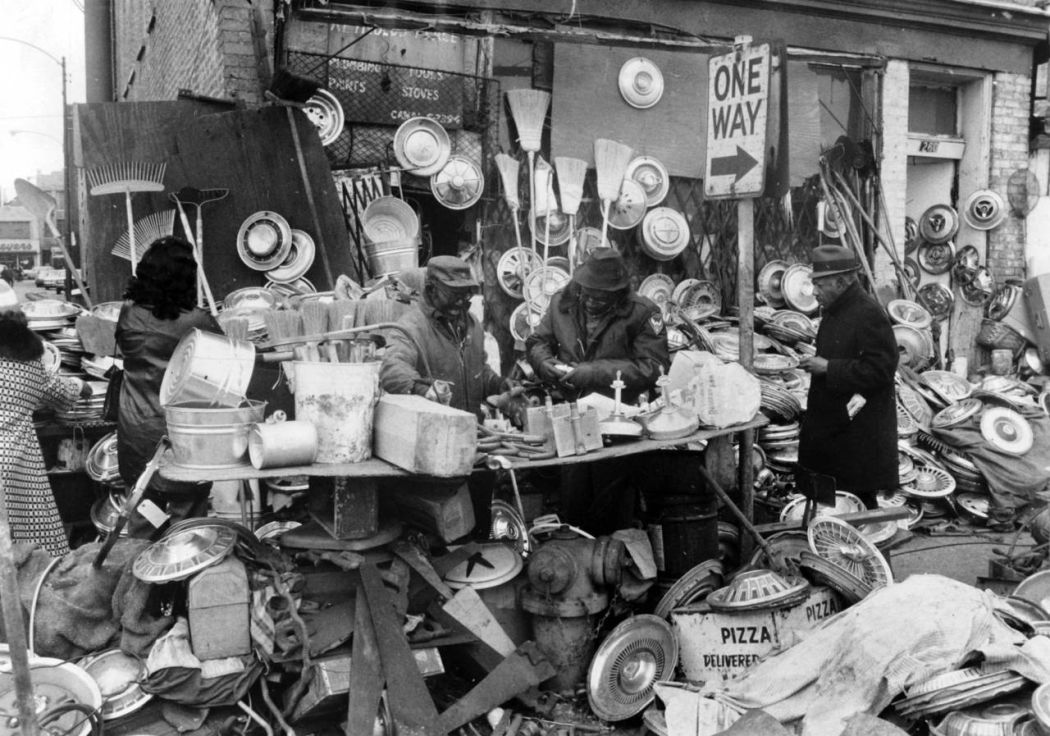
Hubcaps, rakes, brooms, shovels and more can be found at Maxwell Street’s open-air market on Feb. 3, 1974. — Walter Kale, Chicago Tribune
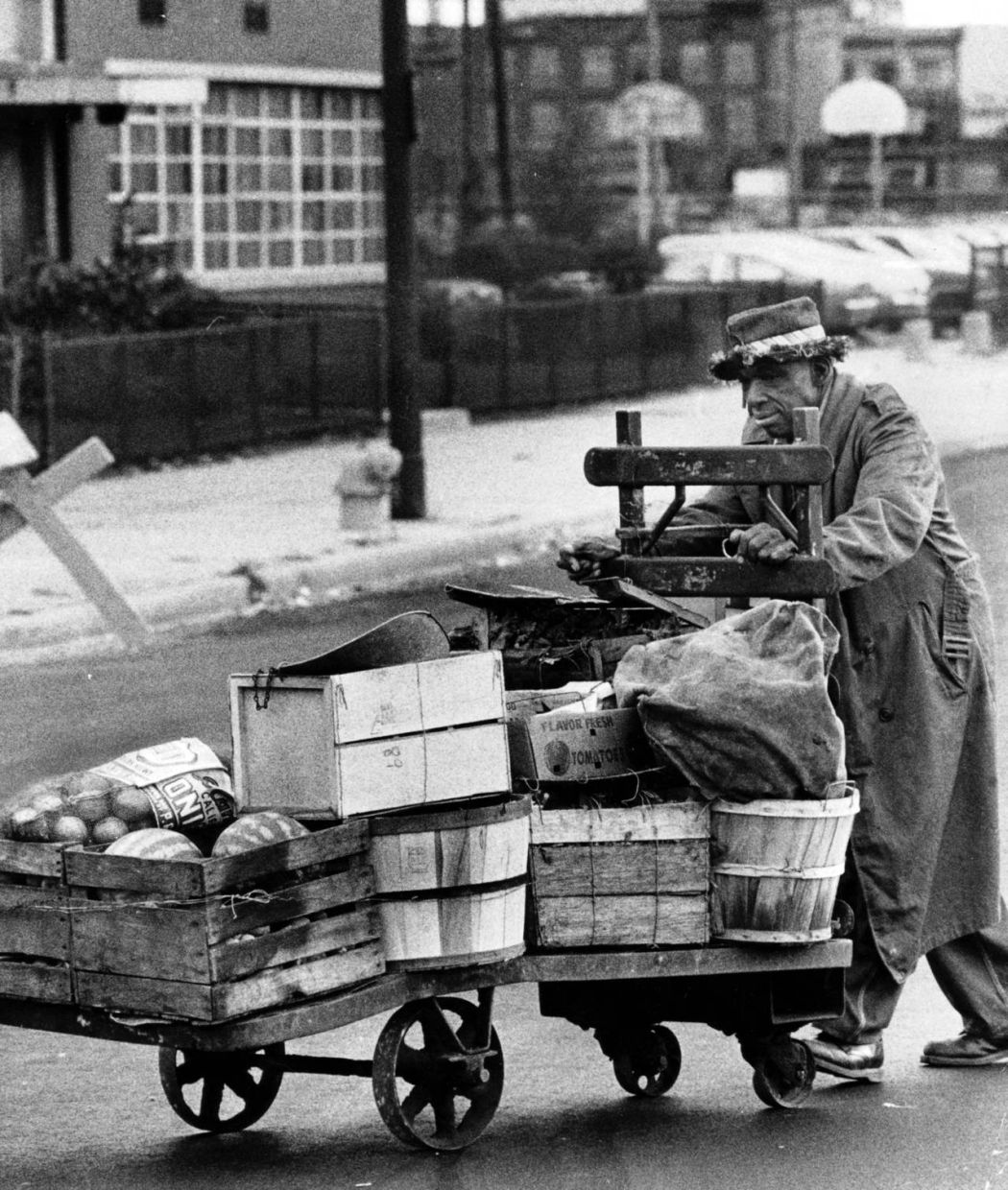
Joe Caldwell sells string beans for 45 cents a pound, tomatoes for 25 cents and onions for 20 cents from his cart in the Maxwell Street area on Sept. 25, 1975. The produce is “seconds,” but Caldwell says his customers don’t mind. “Poor folks can’t afford to pay more,” he declares. — Carl Hugare, Chicago Tribune
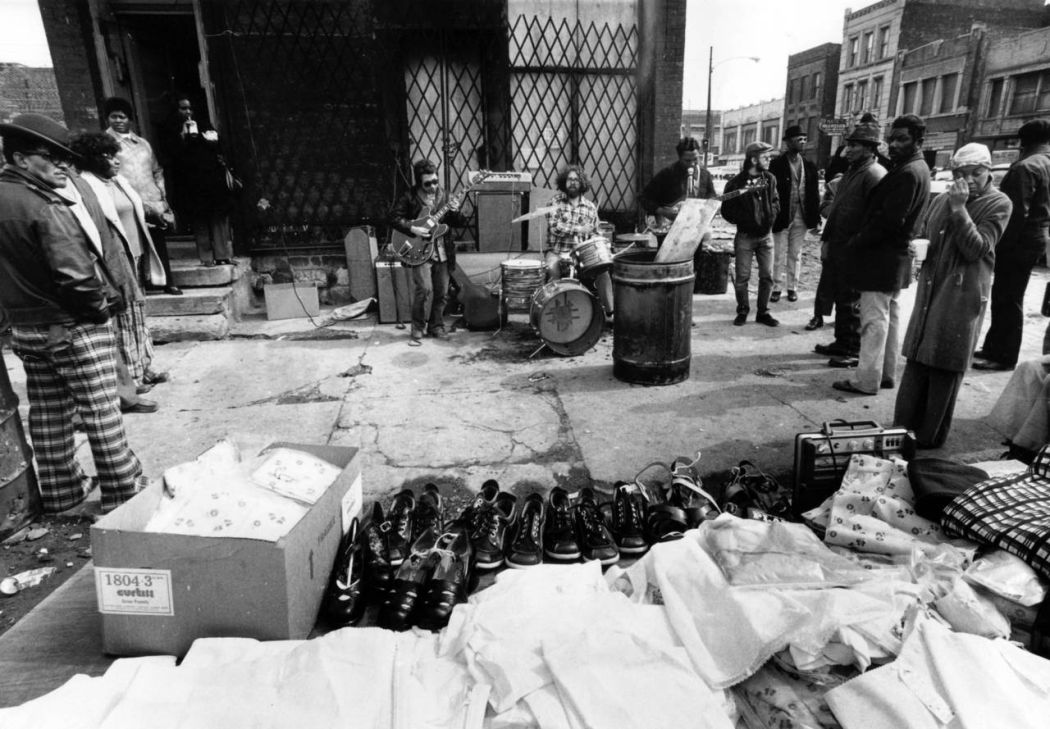
A jazz band plays while shoppers mingle on Maxwell Street on March 16, 1975. — Edward Feeney/Chicago Tribune
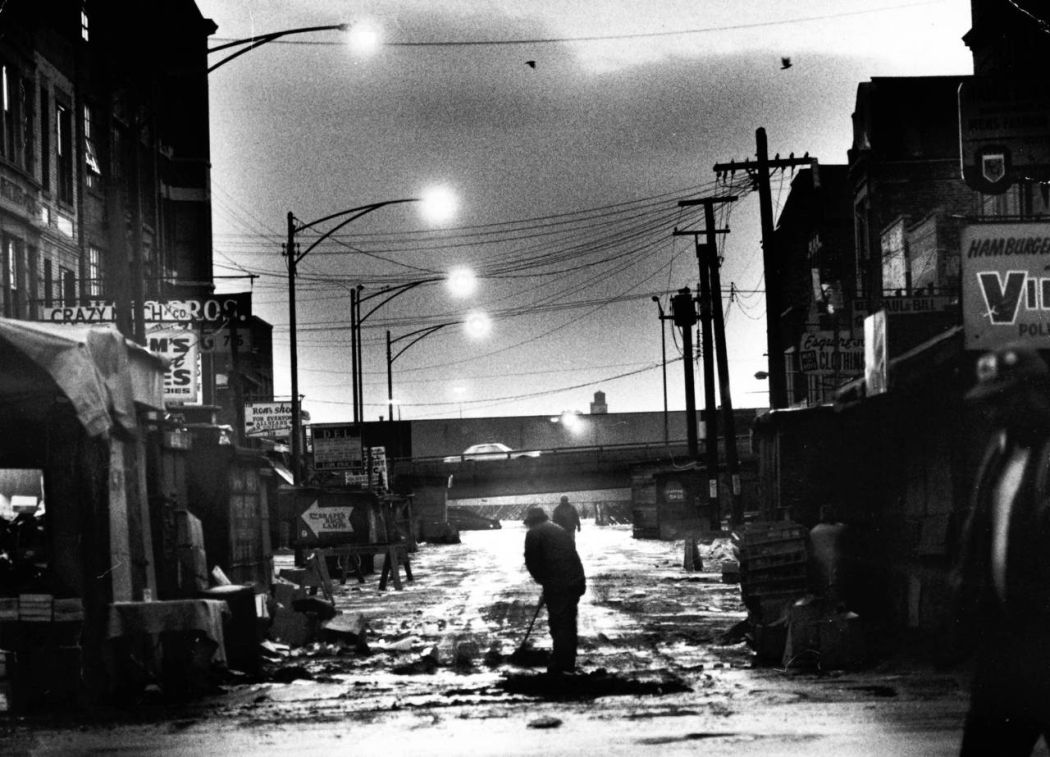
The once thriving Maxwell Street, reduced by a new freeway and a university expansion, was a ghost of a neighborhood when this photo was taken in January of 1982. — Sally Good, Chicago Tribune
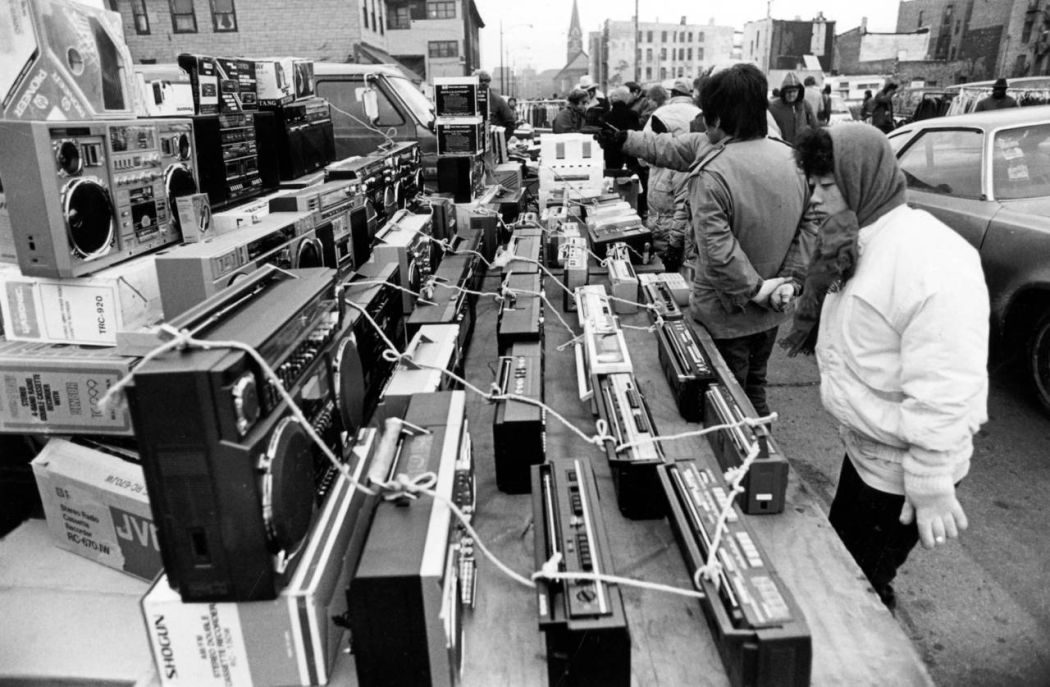
Radios beckon to shoppers along Maxwell Street on Nov. 30, 1986. “You have to know what you’re looking for,” says a frequent visitor to the area. “That’s the secret down here.” — George Thompson, Chicago Tribune
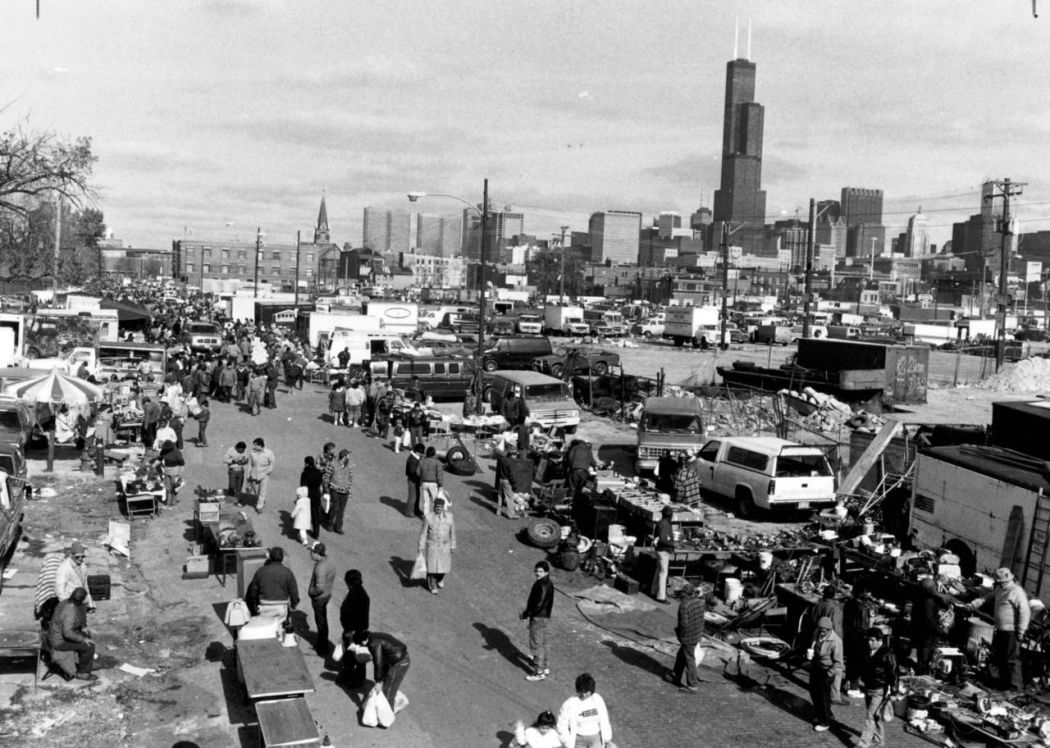
Sunday, Oct. 30, 1988, proved to be a typically busy day at the Maxwell Street market. “It’s one of the most fascinating real estate submarkets in the city right now,” said Greg Longhini of the city planning department in 1988. The view is looking north on Peoria Street. — Gerald West, Chicago Tribune
via Chicago Tribune

